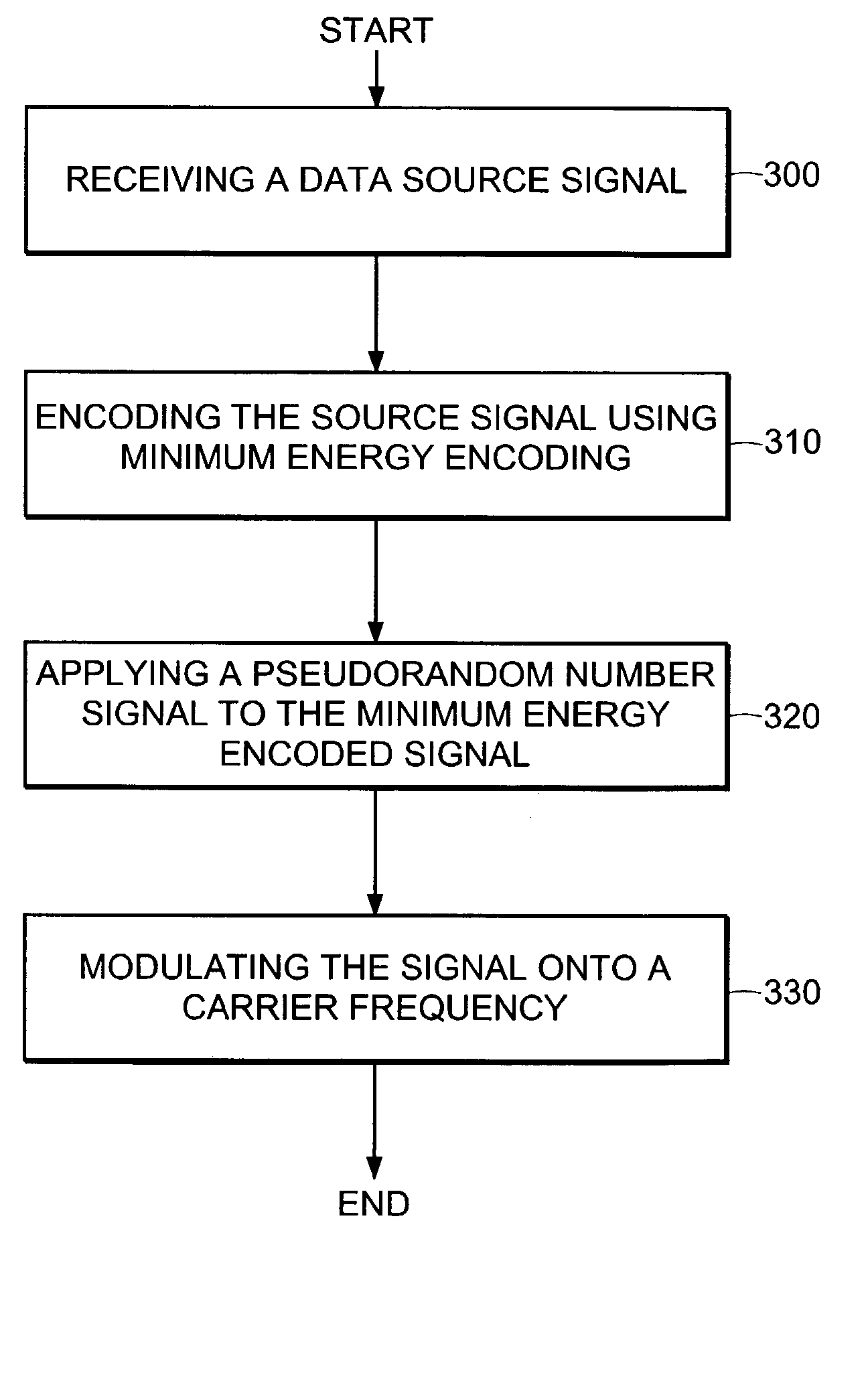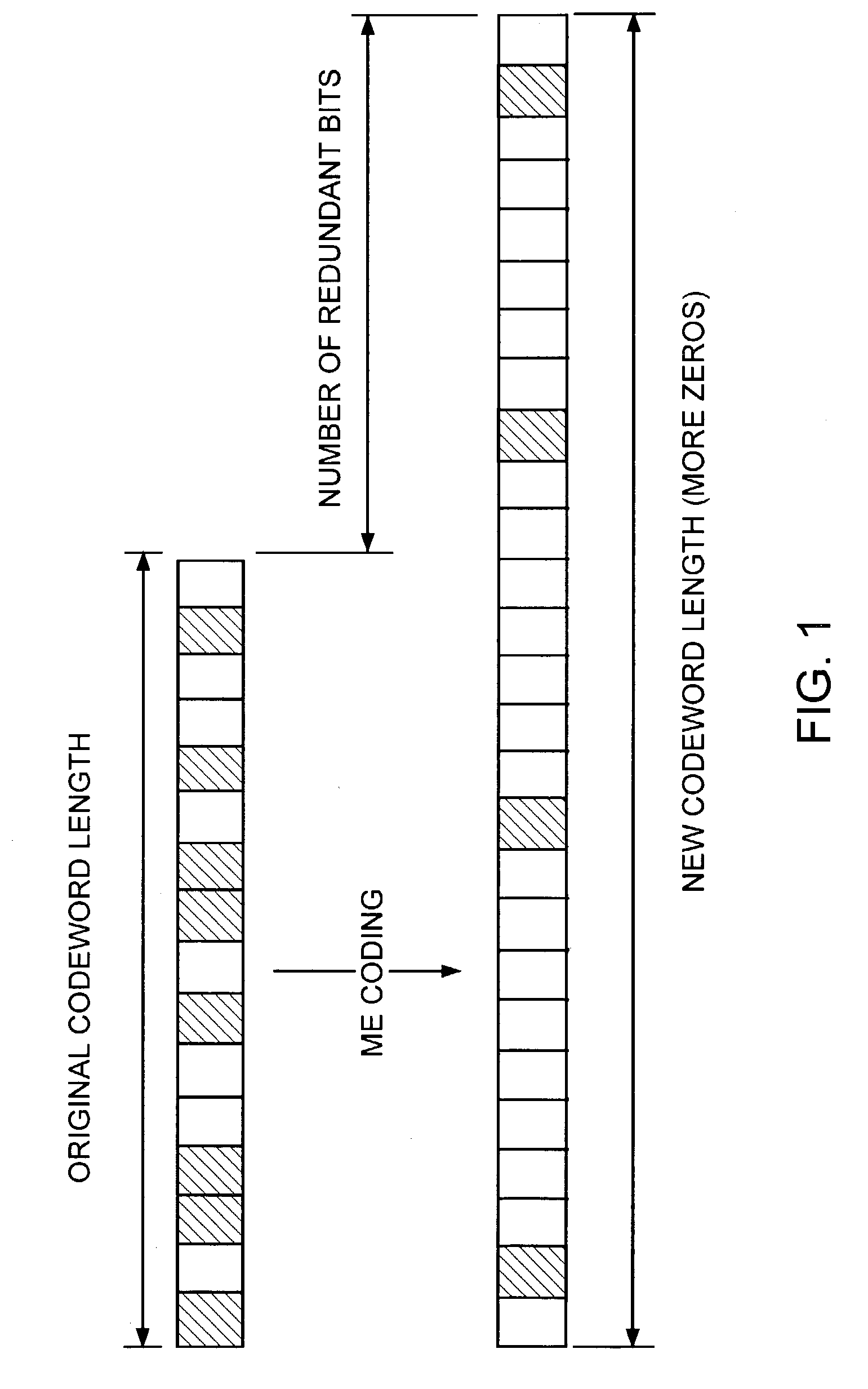Source coding for interference reduction
a source coding and interference reduction technology, applied in the field of source coding for interference reduction, can solve the problems of limited frequency capacity and exponential increase in computational complexity with the number of transmitters
- Summary
- Abstract
- Description
- Claims
- Application Information
AI Technical Summary
Problems solved by technology
Method used
Image
Examples
Embodiment Construction
[0018] In a CDMA system multiple data sources are transmitted on a single carrier frequency. A pseudo-random pattern generator adds a unique pseudo-random pattern to each data source signal in order to provide an identifier of the data source at the receiver. This unique pattern is added prior to all data sources being combined and prior to the combined data sources being transmitted to a receiver. This pseudo-random pattern is a spreading signal that has a chip rate that is orders of magnitude greater than the bit rate of the source. Each data source has its own unique pseudo-random pattern that is approximately orthogonal to all other patterns. This allows the receiver in such a system to perform a time correlation operation to detect only the specific desired pattern and thus identify the data source. All other patterns appear as noise due to decorrelation. The receiver can then demodulate the chip pattern from the data source and the data source is recovered.
[0019] At the transm...
PUM
 Login to View More
Login to View More Abstract
Description
Claims
Application Information
 Login to View More
Login to View More - R&D
- Intellectual Property
- Life Sciences
- Materials
- Tech Scout
- Unparalleled Data Quality
- Higher Quality Content
- 60% Fewer Hallucinations
Browse by: Latest US Patents, China's latest patents, Technical Efficacy Thesaurus, Application Domain, Technology Topic, Popular Technical Reports.
© 2025 PatSnap. All rights reserved.Legal|Privacy policy|Modern Slavery Act Transparency Statement|Sitemap|About US| Contact US: help@patsnap.com



